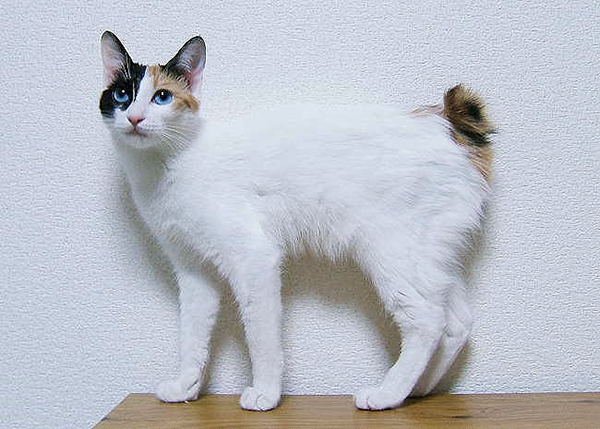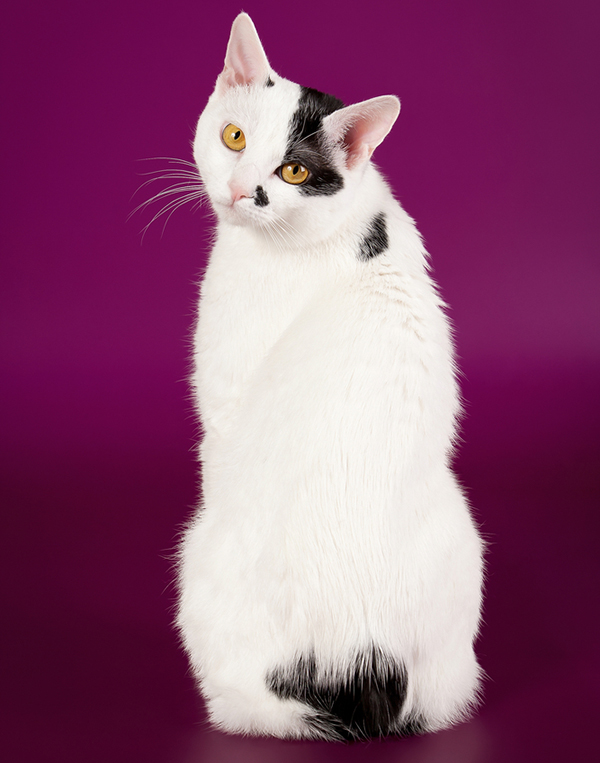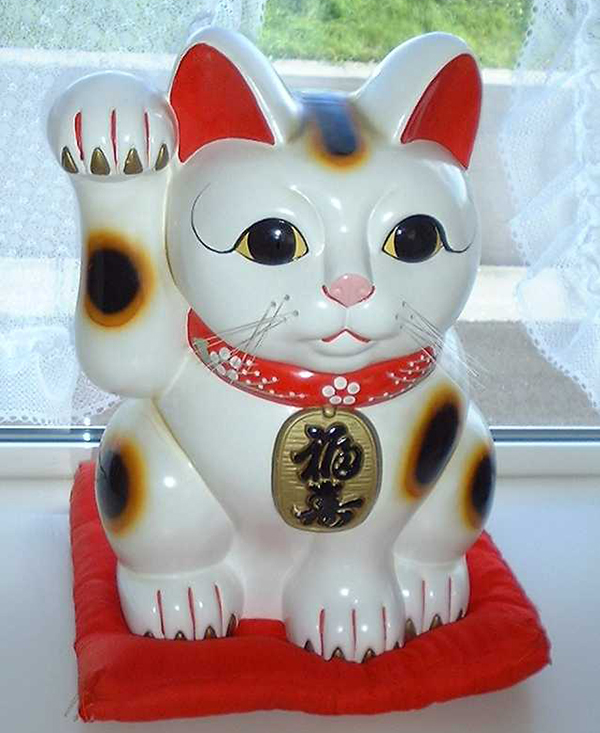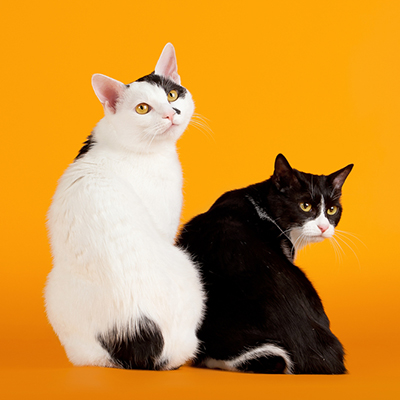Few Japanese symbols are more easily recognizable than the maneki neko, the beckoning cat figurine said to bring good luck to its owner. But what may be less well known is that the maneki neko was inspired by the sweet and charming Japanese Bobtail.
Origins
The Japanese Bobtail, or JBT for short, is one of the oldest “natural breeds” in the cat fancy, having arrived in Japan in the company of Buddhist monks, who kept the cats in order to protect their rice paper scrolls from rodents, between 600 and 700 CE. Many ancient prints and paintings feature images of JBTs.
Breeder Judy Crawford is responsible for the JBT’s first appearance in North America. On a trip to Japan in 1968, she shipped some of the pom-pom-tailed beauties to fellow U.S. breeder Elizabeth Freret. When Crawford herself returned, she brought several more with her. The two worked together to get the Japanese Bobtail recognized for championship status, and their efforts were met with success when the breed was recognized by the Cat Fanciers’ Association in 1976 and the International Cat Association in 1979.

Appearance
Beyond the tail, for which the JBT is named, there are some other characteristics that give the breed its beauty. Like many cats of Asian ancestry, Japanese Bobtails are long and lean, powerfully muscled cats, with almond-shaped eyes set in triangular heads with distinct cheekbones. They also have large ears set high on their heads.
JBTs come in shorthaired and longhaired varieties. The traditional color pattern is the mi-ke (“three furs”) or calico pattern, but they do come in a variety of colors and patterns. Females weigh between five and seven pounds, and males weigh between seven and 10 pounds.

Health and longevity
Japanese Bobtails are remarkably healthy cats, with an average lifespan of 15 to 18 years. This is due in large part to the fact that JBTs have a much more diverse gene pool than most purebred cats. The mutation that causes the JBT’s unusual tail length is not associated with skeletal disorders such as “Manx syndrome.” JBTs usually have litters of three or four kittens who are large for newborns and have a low mortality rate and high disease-resistance rate.
In short, you’re in for a very long-term relationship if you bring a Japanese Bobtail into your home.

What it’s like to live with a Japanese Bobtail
The JBT is a loving, intelligent, adaptable and very playful cat. She’ll gladly serve as the welcoming committee for any guests who arrive at your door, and she’s at her happiest when she’s interacting with you and your family — whether that means a rousing game of Thing on a String or “helping” you to read or make your bed. She’ll make a great traveling companion and she’ll be easy to train to walk on a leash because of her easygoing nature.
You’ll probably find that your Japanese Bobtail is a pretty chatty cat, although unlike other Oriental breeds such as the Siamese, she conducts her conversations in a large vocabulary of soft chirps and meows. Some people even think JBTs can sing because of their extraordinary vocal range.
If you’ve ever been intrigued by feline agility contests, Japanese Bobtails are known to be naturals at this sport because of their speed and their love for jumping hurdles and conquering obstacles.
Japanese Bobtail trivia bits
- JBTs’ tails are as unique as human fingerprints: Every single tail has its own series of curves, angles and kinks.
- The trait of heterochromia (one blue eye and one gold eye) is more common in Japanese Bobtails than in any other breed except the Turkish Van.
- In the 1600s, Japanese silk production was jeopardized by rats, and the nation’s emperor decreed that all cats should be set free to help dispatch the rodent invaders. Thus, JBTs became the street cats of Japan.
Do you have a Japanese Bobtail in your home? What is the cat like to live with? Please share your thoughts and photos of your JBT in the comments.
Read more on cat breeds:
- Get to Know the Siberian: The Folk Cat of the Great Frozen North
- Get to Know the Siamese: A Long, Lean Singing Machine
- Get to Know the Singapura: A Loving, Acrobatic Micro-Cheetah
- Get to Know the Maine Coon: A Gentle Giant Bred by Nature
- Get to Know the Manx: A Mighty Hunter and Sweet Companion
- Meet the Tonkinese: The “Perma-Kitten” With a Heart of Gold
- Get to Know the Nebelung: The Cat of the Mists
- Get to Know the American Shorthair: One of America’s Original Cats
- Why Cat Breeds Like the Bengal, Savannah and Chausie Have No Business Being Banned
- Meet the Sphynx, the Official Cat Breed of National Nude Day
- Meet the Lykoi, Better Known as the Werewolf Cat
- In Honor of Colonel Meow: 6 Long-Haired Cat Breeds I Love
- A Grand Tour of Scottish Fold Kittens








